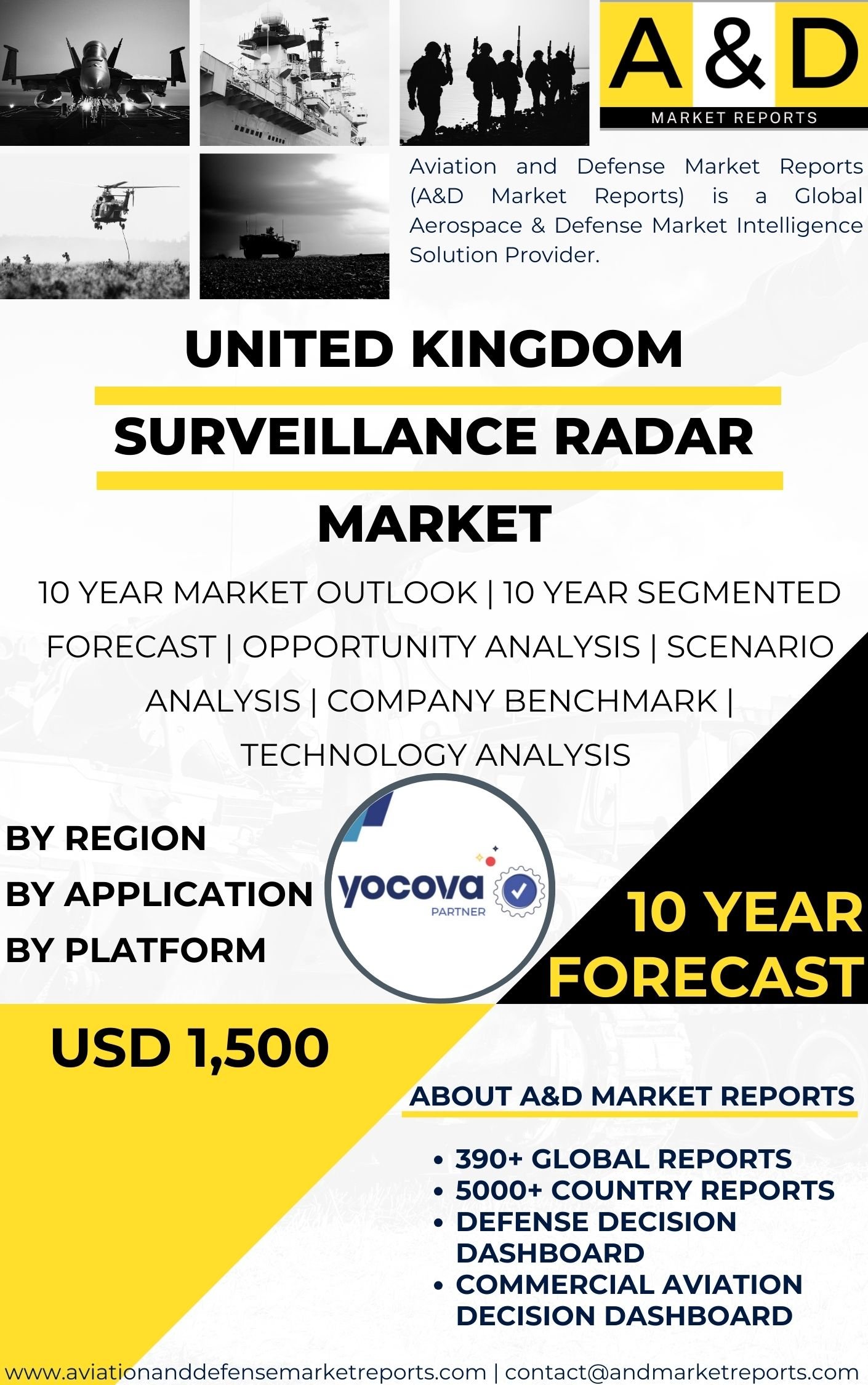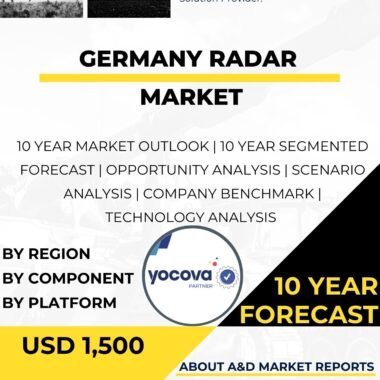Description
The UK surveillance radar market is a crucial and dynamic sector that plays a pivotal role in enhancing the country’s defense, security, and airspace management capabilities. Surveillance radars are advanced sensor systems used for detecting, tracking, and monitoring air and surface targets. These sophisticated radars offer significant advantages in situational awareness, threat detection, airspace surveillance, and maritime security, enabling the UK’s armed forces and civil aviation authorities to operate with increased effectiveness and efficiency.
One of the primary areas of focus in the UK surveillance radar market is the development and procurement of cutting-edge radar systems. The UK government, defense industry, and private sector invest significant resources in acquiring advanced surveillance radars that can meet diverse operational requirements and address emerging threats faced by the country.
Moreover, the UK surveillance radar market addresses the use of these systems across various defense applications. Surveillance radars are employed by the UK’s armed forces for air defense, early warning, target tracking, and maritime surveillance. These radars provide military commanders with critical intelligence and situational awareness, enhancing operational effectiveness and decision-making capabilities.
Furthermore, the surveillance radar market in the UK encompasses the integration of advanced technologies into these radar systems. Modern surveillance radars incorporate innovations in digital signal processing, data analytics, target classification, and electronic counter-countermeasures (ECCM), ensuring they can operate in complex electromagnetic environments and adapt to evolving threats.
The integration of surveillance radars into the UK’s defense market has also been driven by the need for enhanced airspace management and border security. Surveillance radars provide the UK with the ability to monitor its airspace, detect unauthorized intrusions, and respond effectively to potential airborne threats.
Additionally, the surveillance radar market in the UK addresses the use of these systems in civilian applications. Civil aviation authorities use surveillance radars for air traffic control, airspace surveillance, and collision avoidance to ensure the safety and efficiency of air transportation.
The UK surveillance radar market is characterized by continuous innovation and advancements in radar technology. Manufacturers and developers are continually exploring new applications for surveillance radars, as well as improving their performance, range, and adaptability to various operational scenarios.
Moreover, the surveillance radar market in the UK is influenced by the importance of training and expertise. Operating surveillance radars effectively requires skilled radar operators and air defense specialists with a thorough understanding of radar principles, data interpretation, and tactical employment.
The deployment of surveillance radars requires careful consideration of strategic and operational factors. The UK must assess the potential roles and missions for these radar systems in the context of its overall defense strategy, airspace management needs, and civilian aviation requirements.
The UK surveillance radar market faces several challenges. One significant concern is the need for continuous investment in research and development to stay at the forefront of radar technology. As airborne threats evolve and adversaries employ advanced tactics, the UK must remain innovative to ensure its surveillance radars remain effective and adaptable.
Additionally, the surveillance radar market must address the challenge of clutter and interference mitigation. Surveillance radars operate in cluttered environments, and the UK must develop techniques to filter out unwanted signals and maintain accurate target tracking.
Moreover, the deployment of surveillance radars requires strict adherence to airspace management regulations and safety standards. The UK must ensure that the use of surveillance radars complies with international aviation regulations and does not interfere with civilian air traffic.
In conclusion, the United Kingdom’s surveillance radar market is a critical and dynamic sector that offers a wide range of capabilities to support defense, security, and civil aviation operations. Surveillance radars provide significant advantages in airspace management, threat detection, and maritime surveillance. Continuous research, development, and innovation are vital to address challenges and harness the full potential of surveillance radars to support and strengthen the UK’s defense capabilities, airspace security, and civil aviation in the future.




